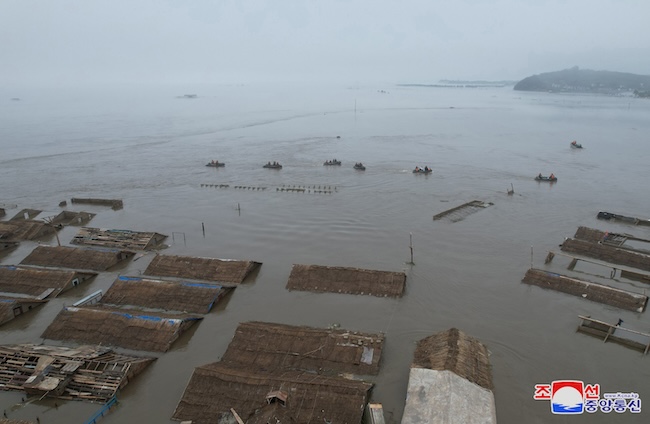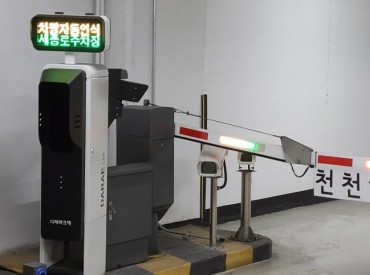
This file photo, carried by North Korea’s official Korean Central News Agency on July 31, 2024, shows submerged areas of North Korea’s border city of Sinuiju in North Phyongan Province due to the latest heavy rains. (Image courtesy of Yonhap)
SEOUL, Aug. 14 (Korea Bizwire) — North Korea’s crop output for this year could be dented by severe floods from the latest heavy rains and a possible increase in pest infestations, the Food and Agriculture Organization (FAO) said Wednesday.
North Korea is expected to receive above-average precipitation amounts between August and October, according to a report posted on the website of the FAO’s Global Information and Early Warning System.
“Heavy rains could exacerbate waterlogging and lead to further flooding, causing significant agricultural damage and population displacements,” the FAO said.
“In addition, above-average temperatures are forecast during the same period, raising the risk of increased incidences of pest and disease infestations, and potentially reduced yields,” it added.
Heavy rains in late July inundated large areas of North Phyongan and Jagang provinces along the Amnok River. Some South Korean media outlets reported the number of those who died or went missing probably exceeded 1,000.
The FAO said cumulative precipitation amounts in July were up to 80 percent above the average in North Korea’s provinces of Hwanghae and Phyongan, known as the country’s breadbasket.
“Although a detailed assessment of the damage to crops is not yet available, it is likely that paddy crops in low lying areas have been particularly affected,” it said.
The North’s crop production is estimated to have increased 310,000 tons on-year to 4.82 million tons last year, according to South Korea’s Rural Development Administration.
Still, it was below 5.76 million tons, the annual amount that the North needs to feed its people, according to a projection by the FAO.
(Yonhap)






